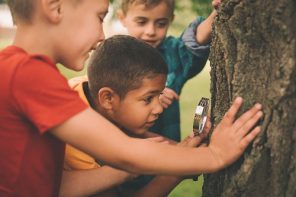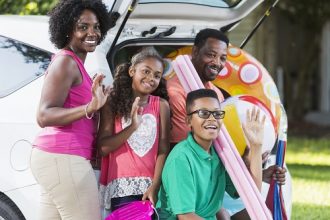Are your kids having trouble getting motivated for school? Similar to what long-distance runners experience, your child may be hitting a wall, especially in this virtual and remote learning year. It’s hard to keep them engaged in the learning process.
I’m sure you’ve witnessed it. One moment your child is flying along, feeling great, and the next, they’re zapped. With energy drained, the road ahead looks long. You and your kids may have experienced a similar feeling, starting the year full of vigor, only to lose steam rapidly when things started getting tough.
With many schools in remote or hybrid learning, it’s even harder to keep up the momentum as fall turns to winter. Experienced runners develop strategies to power through moments like these, finding different ways to overcome obstacles and doubt. While kids aren’t all runners—and learning is not a race—there are ways you can help kids push through these challenges.
Try these four tips to keep your child engaged in learning:
Set a goal and plan for obstacles.
Goal-setting is an essential skill—in school, at home, at work, and in life. Kids should practice setting goals for their learning, which can be as simple as: “I want to finish my homework on Friday night so that I have the weekend to do what I want.”
But goal-setting alone isn’t enough. Kids need to identify the obstacles that might knock them off track (like being tempted to watch a movie on Friday night). When kids envision a positive future, acknowledge the obstacles that may arise, and plan for how they will overcome those obstacles, they are more likely to succeed.
Cultivate the power behaviors of a self-directed learner.
When kids struggle to pick up a new skill, they often misinterpret “this is hard” for “I must not be learning much” and give up. Self-directed learners employ five strategies that help them to reframe their struggles, including strategy shifting, seeking challenges, persistence, responding to setbacks, and seeking appropriate help.
These behaviors take time to establish, but adults can prompt conversations that get kids thinking about how they can move forward. It’s important to focus on process (finding strategies, encouraging determination, asking questions, etc.), rather than on product (regardless of whether it’s good or bad). Sharing examples from your own life about how you moved past obstacles can help kickstart the discussion.
Pursue real-world projects.
In schools that have embraced a project-based learning model, students investigate real-world, personally meaningful problems that challenge thinking and inspire action. These projects allow students to develop new skills and habits—like problem-solving and perseverance—and retain all the facts and information they are learning longer because they are seeing how it connects to real-life situations.
At home, projects can be motivating because they follow kids’ innate curiosity. Begin with a problem, question, or challenge. Then, map out what the project will entail, what your kid will learn, and what the final product will be. Projects allow kids to connect kids’ interests to what they are learning in school. For example, designing a garden for the spring builds math, design, and communications skills.
Find opportunities to celebrate progress, not perfection.
We often think about celebrating major education milestones like report cards and graduations where hard work and perseverance has paid off. However, celebrating everyday accomplishments—whether it is finishing a report or science project—can be a powerful form of external motivation.
Look for opportunities for kids to present their work, even if it’s just in front of the family at dinner. When kids take center stage to showcase their work, they feel pride in their accomplishments and expand their comfort zone to present their work in front of others. The act of celebrating is both motivating and identity-forming for kids.
You can find more tips and tools to help your kids become more engaged and self-directed learners with UNBOXED, a free digital learning kit for kids in grades 4-9. Each month, UNBOXED includes six tools designed to promote engaging, meaningful learning experiences–including a month-long project.
No matter what school looks like for your family this year, there will probably come a time when your kids will lose their focus. Hitting a wall is part of the learning process, but with the right tools, we can help our kids develop the skills and strategies to recapture their motivation.
Mira Browne is the executive director of Prepared Parents.





